A Private Tour today in North Norfolk. It was a lovely sunny morning before clouding over from mid afternoon as the sun lost its battle with the cloud which had been hanging offshore all day. The NE breeze kept a lid on temperatures.
We met in Cley and parked at Walsey Hills. As we walked up to the start of the East Bank, we could hear Little Egrets bubbling in the wood and one or two flying in and out. A couple of distant Marsh Harriers were circling low over the reedbed.
We had a request to see a Yellow Wagtail and as if on cue, a quick scan of the grazing marshes revealed the bright canary yellow male on the grass in the distance. We could just hear it singing from where we were, so we walked further up for a much better view in the scope. It would be great to have Yellow Wagtails back breeding here, but unfortunately he shows no sign of attracting a female.
There were still plenty of Lapwings and Redshanks on the grazing marshes. The Lapwing chicks which had been little balls of fluff are getting much bigger now, but there was still no sign of any young Redshanks. The males were still singing and displaying, but there was no sign of any getting down to nesting. There were Avocets further back on Pope’s Pool and when we heard Curlew calling, we looked over to see four flying off west, maybe finally heading back to the continent to breed.
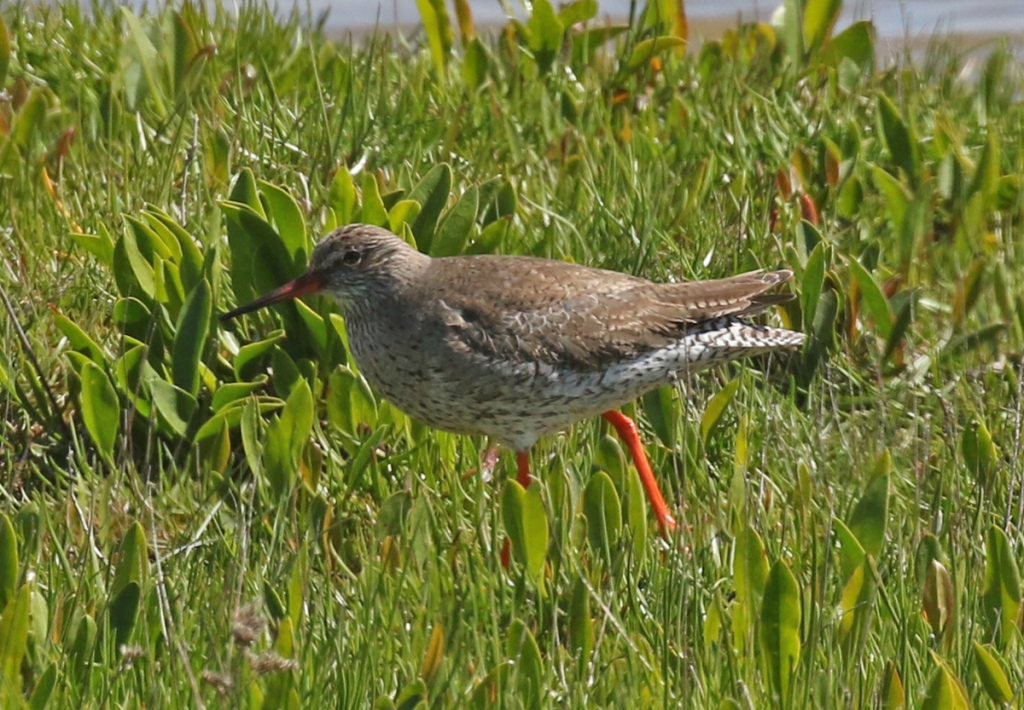
What we thought was a lone drake Wigeon was walking around on the mud on the edge of the Serpentine, whistling occasionally. Then we spotted another pair much further back, on Pope’s Pool. Most of the Wigeon have left, heading back to Russia to breed, but perhaps these will stay here now. There were also a few Gadwall, Shoveler, Mallard and Shelduck, lots of Greylags and a few Canada Geese.
A couple of Reed Buntings were singing from the small bushes out in the middle of the reedbed, occasionally chasing after each other or a passing female. There were Reed Warblers and Sedge Warblers singing too, with one of the latter perching up particularly obligingly. We heard occasional pinging calls of Bearded Tits and managed to see one or two zooming back and forth low over reeds.
There were quite a few Common Swifts zooming round overhead, but they didn’t seem to be heading anywhere today, so possibly just local birds rather than migrants on their way through. We could see a few Sand Martins and one or two Swallows too. As we continued on past the Serpentine, a Water Rail was calling in the reeds.
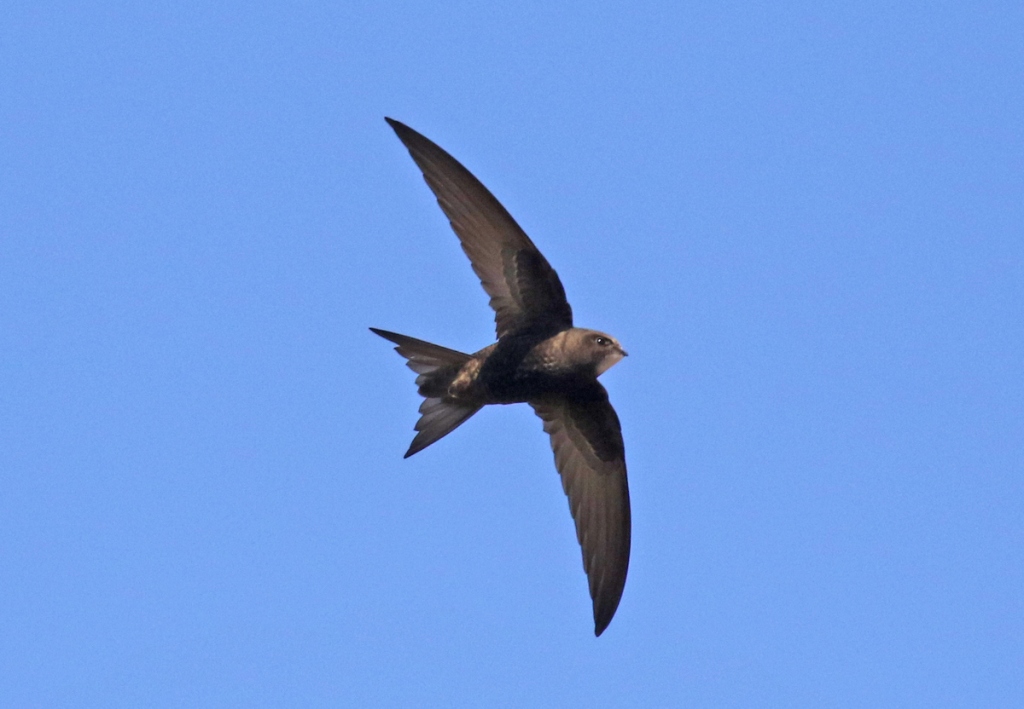
Four terns and some small waders were on the small gravel island at the back of Arnold’s Marsh, so we went into the shelter to set up the scope. It was cool in here today, out of sun and not offering much shelter facing straight into the NE breeze. The pair of Sandwich Terns were more obvious, but two Little Terns were hunkered down just over the top.
Two Grey Plover were roosting in amongst the terns, and on the muddy edge we could see were a Turnstone, and two Sanderling with two Dunlin. Something spooked the birds, and the small waders flew round and landed closer. The Sanderling then took that as a cue to move off, and we watched them fly up high and head north over the shingle ridge. Next stop the arctic? We could now see there were several Ringed Plovers too, in the vegetation on the shingle banks out to the left.
As we walked back, the male Yellow Wagtail was still singing out on the grass. As we passed Snipe’s Marsh on our way back to the minibus, a Little Grebe was diving continually and a drake Common Pochard was asleep out in the middle of the water.
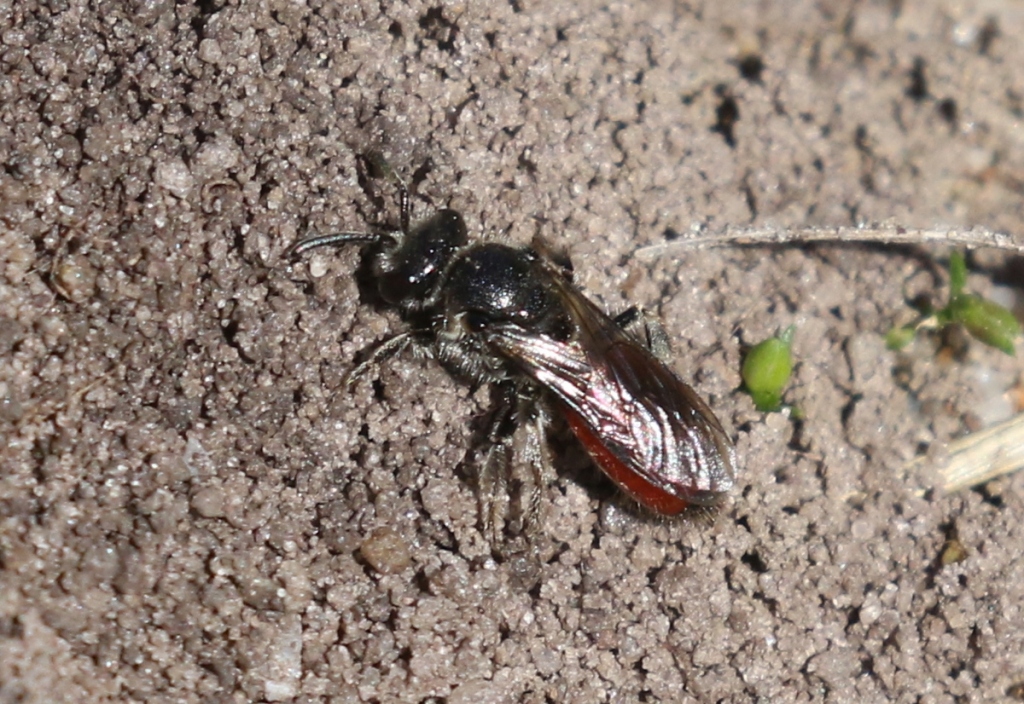
Our next stop was up on Kelling Heath. There were lots of small bees buzzing around the sandy ground in the car park, Sandpit Mining Bees (Andrena barbilabris). We could see where they had been digging their burrows, small piles of darker earth, some flattened by passing feet and tyres. There were a couple of blood bees around the holes too, red-abdomened Sandpit Blood Bees (Sphecodes pellucidus). These blood bees are cleptoparasites of the Sandpit Mining Bees, laying their eggs in cells in the mining bees’ nests. The wonderful world of bees!
As we walked along a small path through the gorse, we saw several bright metallic Green Hairstreaks, fluttering round the gorse or sunning themselves.
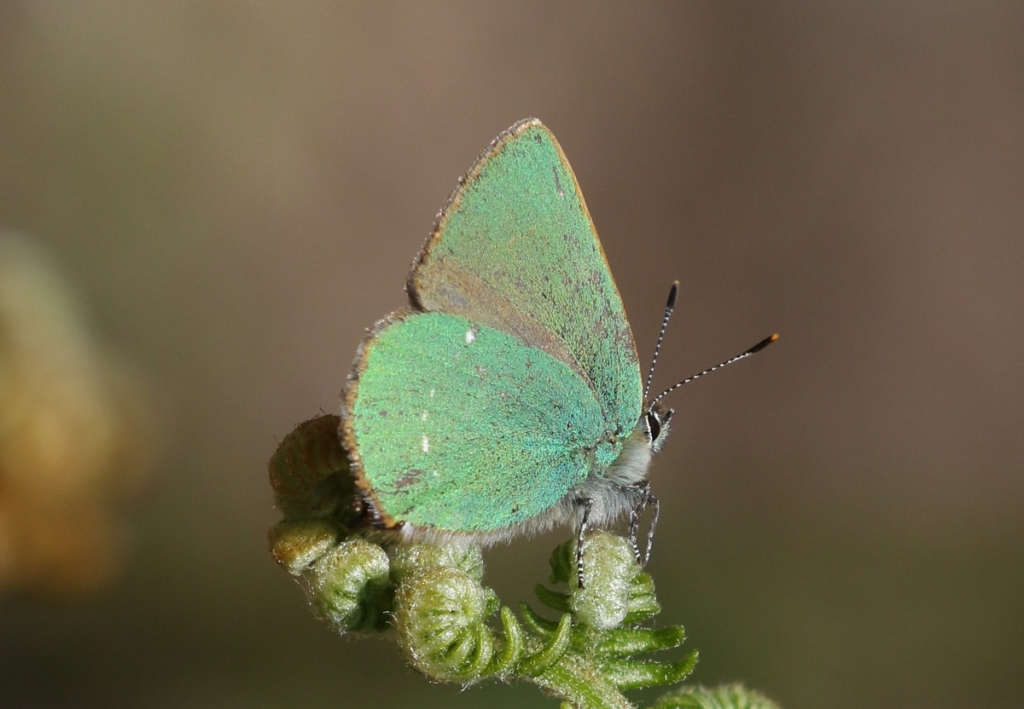
We took the main track down towards the Level Crossing. Suddenly we were surrounded by birds, we didn’t know where to look. A Yellowhammer flew up from the side of the track ahead of us. Then we heard a Woodlark singing, from the clear area away to our right, probably flushed by a group of dogwalkers walking across, and we had a quick glimpse of it was it flew round behind us, but we were distracted by a Common Crossbill calling. We looked up, but all we could see were Linnets flying round and perched on the gorse nearby.
We could still hear Crossbills calling quietly, and this was a particular target for us, so we started to scan for them in the pines. A female flew over our heads but disappeared deep into a tree, where we couldn’t see it. We could still hear calls from ahead of us, so we walked a short way further down the track, and turning the corner found a couple watching some Crossbills deep in a pine overhanging the path, feeding on cones.
We could just see an orangey male Common Crossbill, probably an immature, feeding on a cone. We got it in the scope, fill the frame views, but deep in the trees there were always branches in the way. There were clearly several birds in here and they started flying across to the next tree, further in. Scanning the branches, we found a smart red male out in the open in a much smaller young pine now. We watched it feeding, snipping off cones and carrying them to a branch to extract the seeds, then hanging on other cones and extracting the seeds in situ.
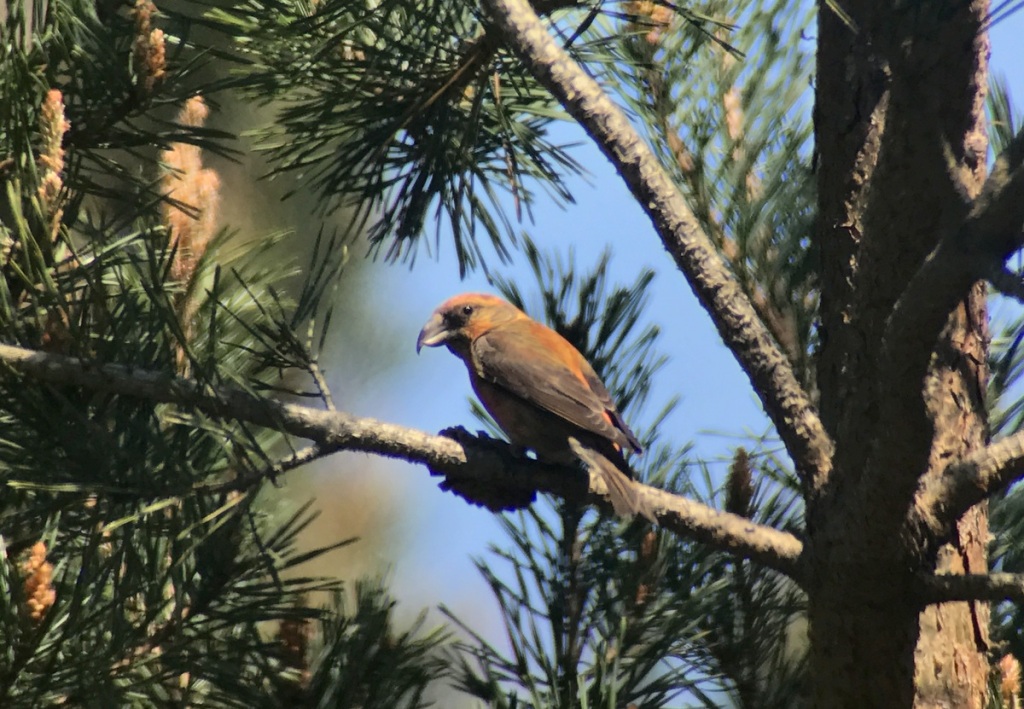
While we were watching the Crossbills, we heard a Nightjar churring from somewhere deep in the trees. They are mostly crepuscular and start to chur at dusk but will occasionally do so in the middle of the day, particularly early in the season. We had a quick look for any Dartford Warblers, but it was the middle of the day and all was quiet. Two Stonechats perched up as we passed. We were keen to start making our way back now or it would be a very late lunch. A Green Tiger Beetle flew ahead of us along the path.
As we walked on round, several Common Buzzards circled up over the ridge, at one point five in the air together. The trees here were rather quiet, there were few warblers singing, probably not helped by the cool breeze coming up over the ridge. We passed several Common Heath moths fluttering round in the heather.
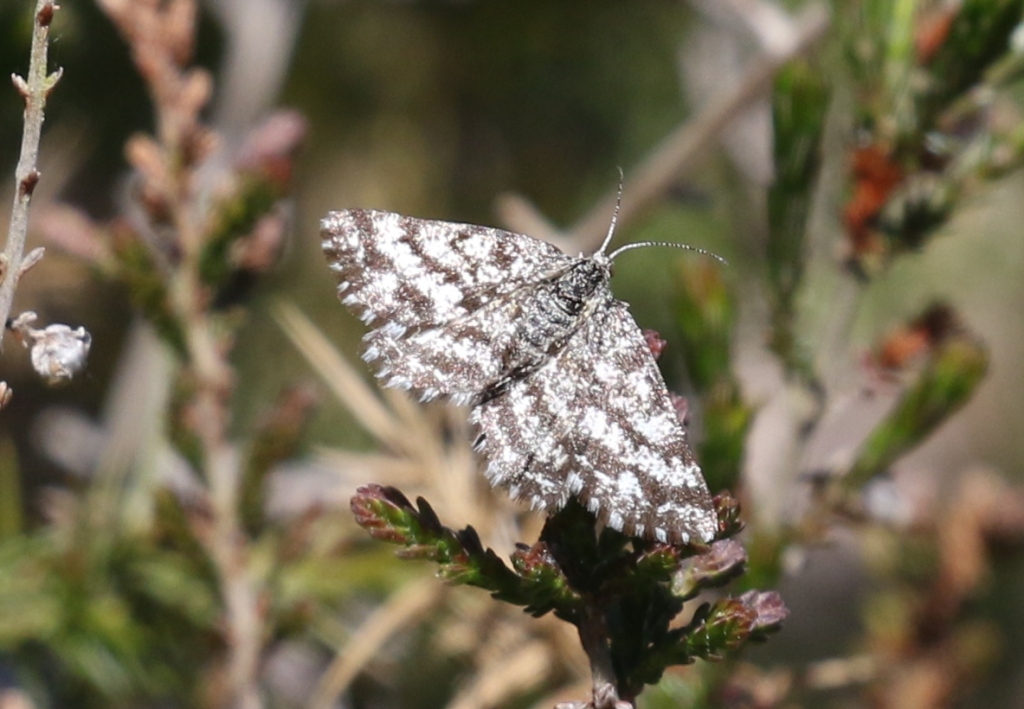
We dropped back down to Cley for lunch on the picnic tables overlooking the marshes. A Lesser Whitethroat was flitting around in the hedge down by the road, but there were people in the way as it disappeared off right. A few minutes later it flew back the other way. After lunch, we drove west to Wells. A Red Kite was hanging in the air over road, and a Great Spotted Woodpecker flew over on the outskirts of Stiffkey.
As we set off down the track, we could hear a Little Ringed Plover displaying and just see it flying round out towards the back of the pool on the right. A couple of Brown Hares were in the meadow, behind the carpet of buttercups and campion, quite a picture!
The young Lapwings are growing up fast here too, but several of the pairs of Avocets have small chicks now. We heard one pair alarm calling loudly, and looked over to see them mobbing a pair of Mute Swans with seven cygnets. A risky thing to do! Another Avocet was busying itself chasing off the Pied Wagtails and a pair of Shoveler from anywhere near its two fluffy juveniles. Much safer than attacking the swans, but of dubious value!
There were at least a dozen Redshanks bathing out in the middle and several more scattered around – here too, no sign of them breeding. We could see two very distant Little Ringed Plover, on the mud towards the back, behind the rushes. We got them in the scope, but it was not a great view, with quite a bit of heat haze too.
The bushes beyond the pools were quiet. It had clouded over now and the breeze was picking up. A nice male Reed Bunting perched up in the hawthorn flowers singing. There were lots of Goldfinches, and one or two Chaffinches, plus a Chiffchaff singing.
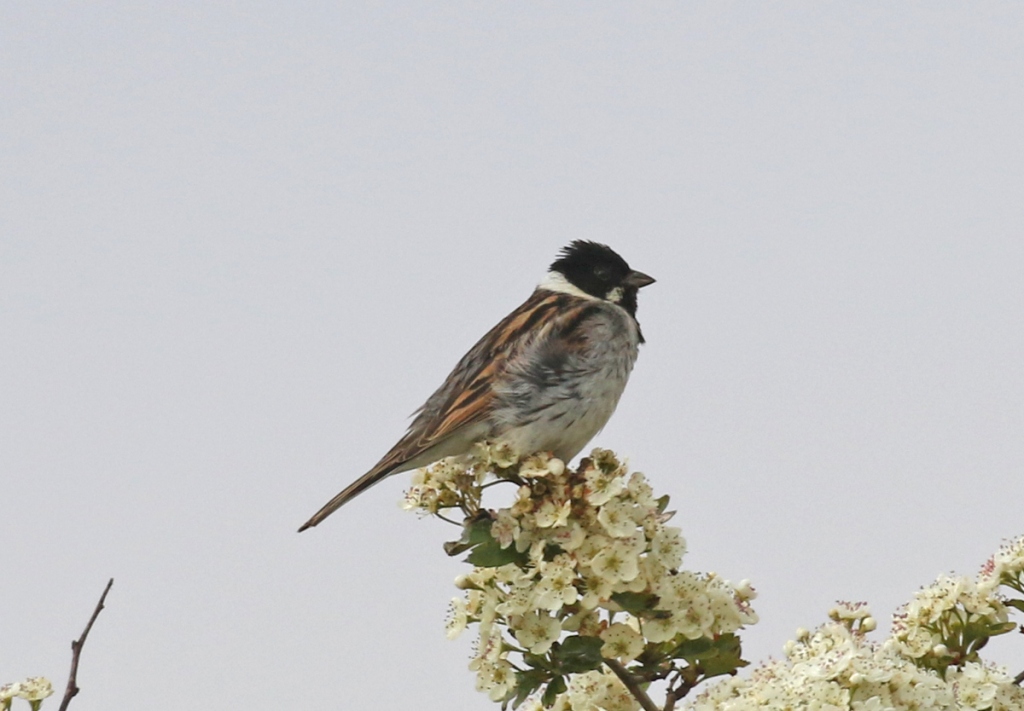
From up on the seawall, we could see more Avocets feeding on the mud on the saltmarsh below. A very distant white shape standing out on the saltmarsh was probably a Spoonbill, but there was just too much haze to say for sure. The Avocets were commuting in and out of the west pool, were several were still on nests. The vegetation is now getting too high to see anything else on here.
When all the gulls and corvids rose up from the pig fields on the ridge inland, we figured something significant must have spooked them. We couldn’t see a likely candidate at first, but a couple of minutes later, looked back to see a Peregrine flying up and away to the east.
It was time to head back. One of the Little Ringed Plovers was much closer now, and through the scope we could see its golden eye ring. As we climbed into the minibus, a smart male Marsh Harrier was quartering over the field beyond.
















